You are welcome to my article on Cockroach Identification tips, heat tolerance, and size for the nine types of Cockroaches Species with pictures in the USA.
This article is all about cockroach species found in North American and mostly in the United States homes.
You will get to know how big they are, where they live, and how to quickly identify each of these types of roaches.
There are thousands of roaches’ species crawling everywhere globally, but only a few are known to plague homes and appliances in the United States.
You will know how to identify these different types of cockroaches in terms of their sizes, color, unique traits, reproduction, lifespan, Unique Traits, heat tolerance, nymphs, origin, distribution, lifespan and habitat, and the impact of each species of cockroaches in your household and life.
Also, you will know what to do to control the infestation of your home and appliances.
But first, see the common trait and general features of roaches in general:
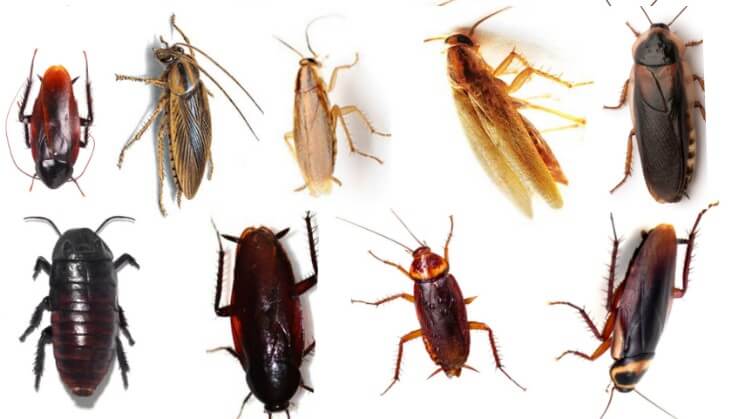
Must-Read Article
- 13 Best Pet-Friendly Roach Killer Products of All Time – 2021 Update
- 11 Best and Effective Ways to Kill Roaches Instantly at Home
- How to Get Roaches Out of Appliances: Microwave, Oven, TV, Xbox One
***Recommended Cockroach Killer Products for Different Species of Roaches***
Combat Max Roach Bait Station – Kills within Hours (Prevent them Returning for 12 Month)
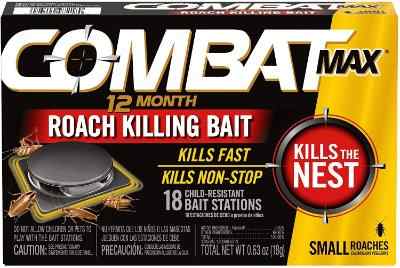
Katchy will Trap and Kill Roaches Plus other Pests (Using Suction Technology, Bug Light, and Sticky Glue)
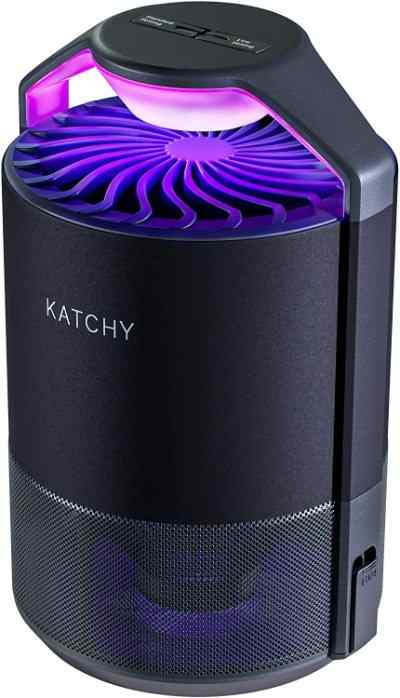
HARRIS Roach Killer Liquid Spray – It is Odorless and Non-Stainingand (Continue to Kill Roaches Weeks After Application)
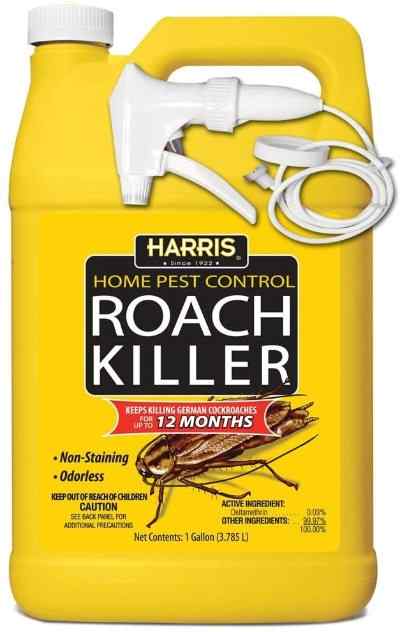
Roach Traps Bug Glue Sticky Traps – Indoor Cockroach Killer (48 Pack)
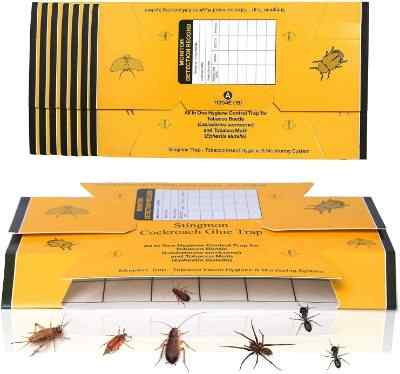
Hot Shot Roach Killer – It Kill Roaches Plus the Eggs they Carry (6-Count)
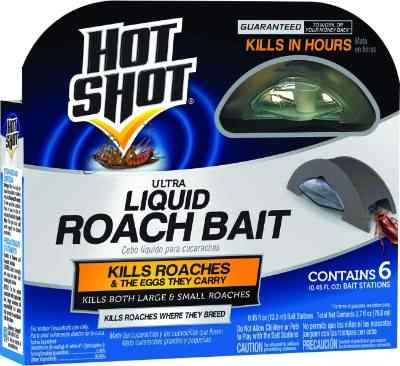
Ortho Home Defense Roach Killer with Essential Oils Aerosol – It Starts Killing Roaches In Seconds (Safe to Use and Around Children and Pets)

Ultrasonic Electronic Roaches & Pest Control Device (6 Packs)
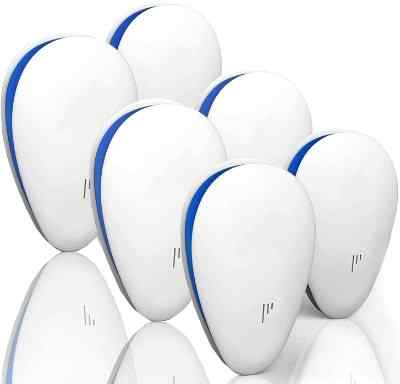
HARRIS Boric Acid Roach Killer Powder with Irresistible Lure that Attracts Roaches for Kill
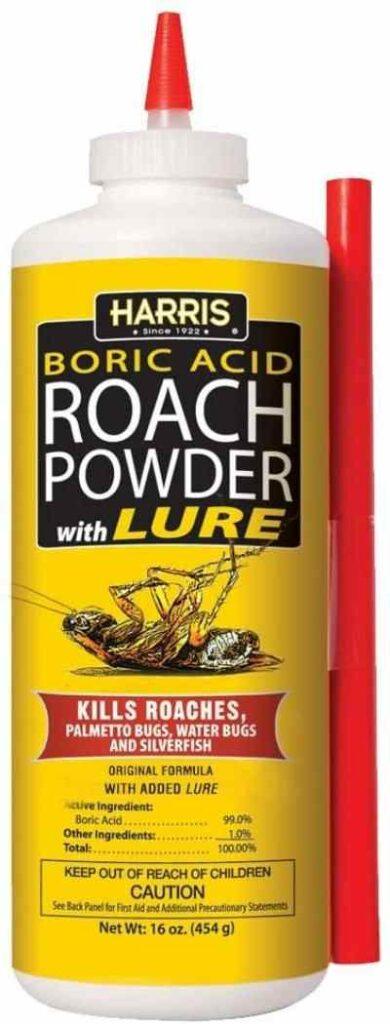
Raid Max Spray Roach Killer (Keep Killing Roaches Up to Six Months)
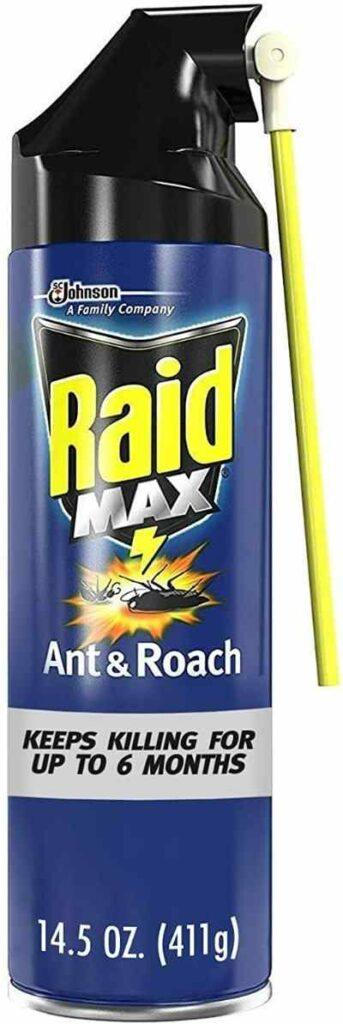
Types of Cockroaches, Identification, and Features
Roaches are common pests in many homes in the United States of America.
Mostly at night, they will go around searching for your food both in the rubbish bins, kitchen, drains and sewers, and your storage places.
Roaches are pests because of their dirty habit and awful smell. Many become allergic to them after many exposures.
Roaches are dangerous pests to homes and appliances, and they often play a role as intestinal disease carriers such as dysentery, typhoid fever, cholera, and diarrhea.
Do you have pest infestation experience with your appliances in your home?
The first move in controlling pests is the identification of the cause, source, and perpetrator.
These are usually difficult for homeowners because they don’t know what it takes to identify the pest involved, nor do they know they also need to see the pest species.
What does a roach look like, and how do you identify one when you see it?
You now know that there are a little below 5,000 species of Cockroach worldwide.
With the different types of Roaches; what do cockroaches look like?
Though most of the types of roaches and species share almost the same features and characteristics, this makes Cockroach Identification exceedingly tricky for many homes.
Most people don’t know what they look like and won’t know what to look for.
So, how do you identify the various cockroaches’ species, and what they look like together with early signs of infestation?
Common Traits in Cockroaches Type and Species
These are standard traits that can help in the identification of types of Cockroaches both at home and in any of your appliances.
Each type of Roaches exhibits some typical traits and features.
You need to know how to spot and identify these roach species in your appliances and at home before they manifest into a large infestation.
What are the traits of cockroaches type and species?
Below is a list of types of Cockroaches species and ways to identify them:
- Each roach has a flat oval shape body, and this is common to many species.
- They have their head concealed in a large pronotum.
- Roaches also have slender and long antennae with segmented cerci.
- They often use their chewing mouth to scavenge on organic materials at home with your appliances.
- Most Roach is reddish-brown but can look whitish for a while just after molting.
- They move very fast, and some even can fly. Therefore chasing to kill or stop roaches with manual swiping will be difficult.
- Roaches also pose some health risks for your household and can damage your appliances. You can learn more about Roaches on Wikipedia.
- They are known to spread over 40 kinds of bacteria and infection in humans via your water, foods, and storage.
Below are nine types of cockroaches with pictures that are predominantly seen in the USA today:
German Cockroaches Identification Guide
German Cockroach Size
The average size of any German Cockroach is about 1.1 to 1.6 cm long. This species of Cockroach get an increase in size as it grows.
Color
The German Cockroach color varies from Tan to Black with two dark, rough but parallel streaks behind the head down to its wings.
Unique Traits
German Cockroach is the most widely troublesome of all the few Cockroach species, and it can barely fly.
Habitat and Relationship with Humans
German Cockroach inhabits human buildings.
It is known to associate with kitchens, restaurants, hotels, food processing facilities, and establishments like hospitals, Nursing homes.
They only live close to humans in the cold and can not survive extreme cold.
The German Cockroaches type are very dangerous to humans.
They will invade your home and can destroy your electronics and household appliances.
They also carry viruses, parasites, and bacteria in their feces and bodies, resulting in humans’ health concerns like dysentery, salmonella, and diarrhea.
The Origin and Distribution of German Cockroaches
So, where do German roaches come from?
We use to know that German Cockroaches came from Europe, they are now considered to be from Northeast Africa, i.e., Ethiopia.
The recent evidence shows that the German Cockroach came from South East Asia.
It has now spread widely, probably caused by international trade.
What does German Cockroach Eat?
German Cockroaches are Omnivorous scavengers.
The main things that attract them are starches, sugars, meats, and fatty foods.
Where there is food scarcity, they will eat household appliances, soap, toothpaste, and glue. They also turn cannibalistic during the famine by eating themselves.
How does German Cockroach Reproduce?
German Cockroach reproduces faster and more than any other residential species.
It grows from egg to reproductive adult between 50 to 60 days.
German Cockroach Life Cycle
The whole German Cockroach life cycle spans have around 100 days (this may exceed 100 days in some regions).
Some researchers concluded that the Cockroach life cycle depends on many environmental conditions.
Can German Cockroach Fly?
No, German Cockroach Can barely fly.
German Cockroach Heat Tolerance
The German Cockroach with heat tolerance of temperature between 15–35 °C or (59–95 °F)
German Cockroach Nymphs Development
This species of Cockroach nymphs will develop between 54 to 215 days at 24–35 °C or (75–95 °F).
American Cockroaches Identification Guide
American Cockroach Size
The American Cockroach size Is an average height of around 7 mm (0.28 inches) and is about 4 cm (or 1.1–2.1 inches) long.
Color
American Cockroaches’ color is reddish-brown with a yellow-like band outline at the back of their head.
Unique Traits
American Cockroach is large and differs from other species, and has the most extended lifecycle of about 700 days.
Another name for this species is waterbug in some United States regions (though not aquatic). People also call this species of Cockroach Bombay canary and ship cockroach.
American Cockroach has a pair of large eyes each with over 2,000 lenses. Its hexagonal apertures provide what is call mosaic vision.
It is a continually active night Cockroach that shuns light.
Habitat and Relationship with Humans
American Roach will move indoors in cold weather; they will seek warmer food and environment.
This species will enter your house via your sewage, door plumbing, air ducts, and any possible openings.
The odorous secretions of this species to foods and home appliances are a risk to humans, and such can change the taste of foodstuff from homes.
They can also pick up the bacteria Salmonella contaminated with foods, resulting in food poisoning and infection to humans.
House dust on appliances and home equipment that contains American Cockroach feces and its body parts can cause allergic reactions and, in many cases, asthma for many people.
Are there any good uses of American cockroaches?
Yes, American Cockroach is used in Chinese traditional medicine.
The Origin and Distribution of American Cockroach
American Roach was believed to have been introduced to the Americans in the 17th century via human commercial activities, i.e., Atlantic Slave Trade.
The origin of the American Cockroach is believed to be the Middle East and Africa.
Therefore with the name America name associated with this species, none is a native of American.
The species are now widespread in tropical climates due to human movement and activities.
American Cockroaches can also be found on the warm coast and southern Spain and can also be seen in south Portugal.
What do American Cockroaches Eat?
American Cockroaches are omnivores that feed on human foodstuffs and home appliances materials such as glossy paper, soiled clothing, plant, dead animals, hair, manuscripts, books, bakery products, leather, and tea, etc.
This species loves to eat fermenting foods and also feed on dead and wounded cockroaches of any species.
How do American Cockroach Reproduce?
A female adult American Cockroach reproductive cycle can be as long as 600 days, and it can produce an average of 150 young American Cockroach.
American Cockroach Life Cycle
The American Cockroach life cycle spans are split into three stages egg stage, the nymph stage, and the adult stage.
This species’ life cycle is from egg to adult stage on average, about 600 days, while an adult American Cockroach can live for over 400 days.
So, American Cockroach has an average life cycle spans of between 1 to 1.5 years.
Can American Cockroaches Fly?
Yes, both male and female American Cockroaches have wings, and they can fly short distances and very fast.
It can dart out of sight quickly when it is perceived as a threat to its life.
American Cockroaches Heat Tolerance
The American cockroach’s heat tolerance and temperature is between 15 to 35 °C or (59–95 °F).
American Cockroaches Nymphs Development
This species of Cockroaches’ nymphs development is between 54 to 215 days and within a temperature range of between 24 to 35 °C or (75–95 °F).
This species of nymphs can regenerate its limb.
Oriental Cockroaches Identification Guide
Oriental Cockroach Size
The Oriental Cockroach are 25 mm (or 2.5 cm) to 30 mm (or 3.0 cm) long
Color
Oriental Cockroach is either black or dark brown, and they also have a glossy body.
Unique Traits
The Oriental Cockroach is also called a water bug because they love living in a damp environment, or you call them black beetle (because of the dark color of their body).
This species is extensive in size compare to others. The adult males are in the average range of 18–29 mm (or 0.71–1.14 inches), while the adult female’s size is about 20–27 mm (or 0.79–1.06 inches).
The female Oriental Cockroach is slightly different from the male because it seems wingless and has a wide bode.
Habitat and Relationship with Humans
Oriental Cockroaches are slow travelers compare to any other species. They are called waterbugs because they love to live in a dark, moist environment.
You can use the above features for the identification of Oriental Cockroaches because they rarely fly.
You can see Oriental Cockroaches around decay organic substances in homes, toilets, sinks, plumbing drains, sewers, porches, a damp location like a basement, outsides near the apartment, bushes, under leaf groundcover, and any damp places outdoors.
These species can survive for over a month without food, but they can only do without water for only two weeks.
Oriental Cockroaches are a source of viruses and bacteria to humans. They transmit viruses via their legs working on food, countertops, dishes, and other home appliances.
They are outstanding in spreading food poisoning, Salmonella, E. col, and dysentery to humans.
The Origin and Distribution of Oriental Cockroach
Oriental Cockroach is a household pest in the Southern, Northwest, and Midwest United States. They can be found in England, Australia, Israel, and South America.
Oriental Cockroach is known to have originated from the Black and Caspian Seas.
What do Oriental Cockroach Eat?
Oriental cockroaches love starchy human scraps, but they mostly enjoy a natural diet of decaying plants, household appliances, and animal matter.
How does Oriental Cockroach Reproduce?
Oriental Cockroach lives less than 180 days. The female of this species can produce eight egg cases, each case consisting of 16 eggs.
They are used to carrying their egg for over 30 hours before dropping them in a hiding place.
Oriental Cockroach nymphs will hatch and get to maturity between 6 to 12 months after.
Their nymphs will be active in March throughout summer, and they sometimes molt between 7 to 10 times before reaching maturity.
Oriental Cockroaches can live for between 6 to 12 months, and its female can produce over 200 eggs in their lifetime.
Oriental Cockroach Life Cycle
The Oriental Cockroach has a life cycle spans of between 1 to 1.5 years.
Can Oriental Cockroach Fly?
No, Oriental Cockroach can not fly.
Oriental Cockroach Heat Tolerance
The Oriental Cockroach have heat tolerance that ranges between 20 °C (or 68 °F) to 29 °C (or 84 °F)
Oriental Cockroaches Nymphs Development
The Oriental Cockroach nymphs’ development ranges from 6 to 12 months.
Brown Banded Cockroaches Identification Guide
Brown Banded Cockroach Size
The Brown Banded Cockroach is the smallest species in size of all Cockroach. Its body is about 10 to 14 mm (or 0.5 inches) long.
Color
Brown-Banded Cockroach has a light brown color while the female is a bit much darker than the male roaches.
Their body color helps the invade and blends among furniture, appliances, cabinet, and foods at home.
Unique Traits
Brown-Banded Cockroach is small species of Cockroaches.
They appear to be irregular and broken, but they are visible.
The male wings cover its abdomen while the Female wings do not cover the abdomen.
The female looks wider while the male appears to be smaller than the male.
Habitat and Relationship with Humans
Brown Banded Cockroach can be lurking in the appliances, kitchen cabinets, bathrooms, and throughout the household.
This species is less common in a bright place; they are usually not seen in the daytime (they avoid light).
Brown-Banded Cockroaches can also cause multiple health challenges to humans because they are known to be carriers of microorganisms, and they spread the pathogen.
They can easily pick up on germs via their legs working in the sewage and transmit the same by working on food and appliances at home.
The Origin and Distribution of Brown-Banded Cockroach
Brown Banded Cockroach was believed to originate from Cuba into the United state in 1903. You will see them throughout the southern, northeastern, and Midwest regions of the USA.
Research has also shown that recently forming breeding and colonies in Ireland and Britain.
What do Brown Banded Cockroach Eat?
Brown Banded Cockroach will eat anything and everything. This species will eat itself and other Cockroach species.
The Brown Banded Cockroach diet consists of sewage items, food items, boxes, and drapes. They also love starch items like bided books and wallpapers.
This species will also feed on households such as dyes and pastes.
How do Brown Banded Cockroach Reproduce?
Brown Banded Cockroach females will have 14 egg capsules in their lifetime. Each capsule will contain between 10 to 18 eggs.
Brown Banded Cockroach Life Cycle
Brown Banded Cockroach will live for an average of 206 days and can reproduce at alarming rates.
Do Brown Banded Cockroaches fly?
Only the male of this species can fly, but both the female and males have wings.
The male Brown Banded cockroaches’ wings are much longer while the female’s wings are shorter, hence can not fly.
Brown Banded Cockroach Heat Tolerance
The Brown Banded cockroach’s species temperature will thrive in an environment with a temperature between 25 to 33°C
Brown Banded Cockroach Nymphs Development
The pre-adult development, i.e., from eggs to nymph stage, will take 80 days.
Smoky Brown Cockroach Identification Guide
Smoky Brown Cockroach Size
The average size of the Smoky Brown Cockroach is 38 mm long. It is the largest of all the species of cockroach in size.
It ranges between 1.25 and 1.34 inches.
Color
The Smoky Brown Cockroach has a uniform dark brown mahogany color. Their thorax is very dark and shiny.
Unique Traits
Smoky Brown Cockroaches have a unique mahogany color with a tiny but long body.
Both male and female have longer winged that covers their abdomen and help them both to fly smoothly. The identification of Smoky Brown Cockroaches is via their wings and the mahogany color.
Habitat and Relationship with Humans
Smoky Brown Cockroaches are unlikely to invade your home, but they can still come inside and cause a problem in your household, and they can even live.
You can see them in a pile of dead leaves and within drains and sewages.
The Origin and Distribution of Smoky Brown Cockroach.
The Smoky Brown Cockroach is like a warmer climate, and it is not tolerant to cold. It does survive cold weather by moving indoors.
These species fare great in the moist concealed environment.
But where do smoky brown cockroaches come from?
Smoky Brown Cockroach is believed to have a lot of presence in Japan, but they are mainly seen in Texas, i.e., Eastward to Florida.
They are a pest in New Orleans and Houston, Louisiana, Indiana and Illinois, Southan Mississippi, and Southern California.
You can also found Smoky Brown Cockroach in warmer cities of Australia like Brisbane and Sydney.
What do Smoky Brown Cockroaches Eat
The Smoky Brown Cockroaches can also feed on a comprehensive organic substance; just like common roaches, it is a scavenger.
They will consume any food they find in their homes, and they require water between 2 to 3 days to stay alive.
How do Smoky Brown Cockroach Reproduce?
The reproduction and development period of Smoky Brown Cockroaches from egg to adults varies on the environment and conditions.
But the reproduction time ranges between 160 days to 716 days.
A female species’ egg production is in an average of 10 cases (Ootheca) of egg and 20 eggs for every Ootheca.
A female of this species can produce 32 cases in its lifetime. You can read more about the Biology of Cockroach here.
Smoky Brown Cockroach Life Cycle
A female adult can have a life cycle spans of over 218 days while a male can live for an average of 215 days life cycle spans, i.e., This species of roaches can live for between 2 months and six months on average.
A Smoky Brown Cockroaches’ life cycle span is an average of a year, but they can even live for two years in some regions and with the right environmental conditions.
Can Smoky Brown Cockroaches Fly?
Yes, both males and females of this species have wings longer than their abdomens. Hence, Smoky Brown Cockroaches can fly.
Smoky Brown Cockroaches Nymphs Development
Smoky Brown Cockroaches will go through development stages, i.e., from eggs, nymphs, and then to adult stages.
The Nymphs of this species are somehow like how the adult looks but a bit smaller and without wings.
Australian Cockroach Identification Guide
Australian Cockroach Size
The Australian Cockroach is more significant in size comparably to other species.
Its length is between 25 to 35 mm or 0.91–1.38 inches.
Color
The Australian Cockroach is brown and having tegmina and a margin of the lateral pale stripe.
Its head shield has a sharp but contrasting pale yellow margin.
Australian Cockroach is somehow similar in appearance to that of American Cockroach.
The difference between the two species is smaller, with a yellow margin with its thorax.
Unique Traits
The unique thing and trait of the Australian Cockroach is its color.
The Australian Cockroach is light-brown in color with a very distinct black spot and shapes on its pronotum.
There is an ivory-yellow, banded and pale circle around the black shape.
It also has a distinct and unique stripe that is pale and yellow, extending down its forewing length.
It also has dark and brown, enormous wings with a large head shield.
Habitat and Relationship with Humans
The Australian Cockroach loves a warmer climate and hates to stay in a cold environment. It hides indoor and in homes if there are freezing temperatures.
This species will tolerate a dry environment but does well in moist conditions. It lives close to buildings and water.
Australian Cockroach is a scavenger and can feed on different decaying organic matter varieties, but it loves to feed more plants.
This species can come indoor and enter your home to search for food and live but only in warm weather conditions.
It will entre building and home from your garden and debris garden; it is common in an area where winters are low.
The Origin and Distribution of Australian Cockroaches
The name “Australian” in Australian Cockroaches has nothing to do with its name. It probably originated in Africa (according to Wikipedia).
Many researchers come from southern Asia then transported to Australia via commercial and international trade via shipping.
This species is a cosmopolitan one and was introduced in Australia.
Australian Cockroaches are also common in the tropical climate and southern cities in the USA.
You will find this species in many cities of the world due to transportation via international trade between cities and countries.
It is, however, quite common along the Cape York Peninsula in Far North Queensland of Australia.
What do Australian Cockroaches Eat?
Australian Roaches feed on plant and decaying organic material and also like starchy material of household appliances.
They also like to feed on plants; this species is a scavenger. It may visit your home to look for food and even live.
How do Australian Cockroaches Reproduce?
The Female Australian cockroaches can produce between 12 to 30 Oothecae (egg case) in a lifetime.
Each Ootheca contains 24 eggs a day after production. They produce one Oothecae every ten days.
Australian Cockroach Life Cycle
How long do Australian cockroaches live?
A typical Australian cockroach’s lifespan from the nymph stage to the time of death can be up to two years.
A nymph can take between 6 to 12 months to grow into an adult, and an adult can live up to an average age and life cycle span of 8 months.
Can Australian Cockroach Fly?
Yes, Australian cockroaches can fly.
Australian Cockroach Heat Tolerance
Australian Cockroach prefers a warmer temperature, and it is not cold tolerant. Though, it can adapt to code temperature by going to homes and hides in buildings and appliances.
Australian Cockroach Nymphs Development
It takes 6 to 12 months for Australian Cockroach nymphs to grow and develop into adult roach.
Brown Cockroach Identification Guide
Brown Cockroach Size
The average size of a Brown Cockroach in length is about 4 cm or (1.5 inches) long.
Color
The color of the Brown Cockroach is reddish-brown.
This species is like an American cockroach in terms of appearance but a bit darker in color.
Unique Traits
The Brown Cockroach is an omnivore. It will eat both organic matter and plants and animals.
The species is remarkably like the American Cockroach but has a darker color and more comprehensive, triangular, and thicker cerci. But, the American Cockroach is tall and thin.
Habitat and Relationship with Humans
Brown Cockroaches like to live and thrive outdoors. But can only survive indoors in a cooler climate.
This species will find its way indoors because it is considered a household pest.
It can cause damages to plant and household appliances, just like other common Cockroaches.
The Origin and Distribution of Brown Cockroach
Brown Cockroach is the least seen in the US of all the Cockroach discussed so far. It probably originated from Africa.
This species of Cockroach has been reported sighted in five counties in Texas (Hebard 1943),
According to the publication, it seems to be limited to tropical and sub-tropical coastal counties in Texas.
Two other publications also reported Brown Cockroach distribution in Texas counties in 1954 and 1955; the counties included San Antonio, Bexar, Hidalgo County.
What does Brown Cockroach Eat?
Brown Cockroach is an omnivore.
It can feed on food and home appliances but love to feed on plant and other organic matter.
How do Brown Cockroach Reproduce?
Brown Cockroach’s Ootheca is about 1.2 to 1.6 cm long, and it contains an average of 24 eggs.
Brown Cockroach Life Cycle
The Brown Cockroach life cycle spans is an average year of between 1 to 1.5 years and reproduces at alarming rates in a conducive environment.
Can Brown Cockroach Fly?
Yes, Brown Cockroach can fly because it has a fully developed wing for both males and females.
Brown Cockroach Heat Tolerance
The Brown Cockroach will thrive in a temperature and heat tolerance of between 59–95 °F.
Brown Cockroach Nymphs Development
The Brown Cockroach’s development is between 54 to 200 days and under the temperature ranges of 75–95 °F
Pennsylvania Wood Cockroach Identification Guide
Pennsylvania Wood Cockroach Size
How big do Pennsylvania Wood Cockroach get?
The size average size of the Pennsylvania Wood Cockroach is between 0.50 to 0.96 inches.
The average size of the adult male ranges approximately between 0.66 to 0.96 inches, while the female can grow between 0.50 to 0.71 inches.
Color
The color of Pennsylvania Wood Cockroaches is dark brown. Their thorax and the outline of their wings are whitish and yellow.
Unique Traits
The adult males of Pennsylvania Wood Cockroaches have full wings, while the females’ wings are short (wing pads).
The identification of this cockroach species is by the male’s wings that are longer than their bodies, while the female-only wing pad covers up to two-thirds of their abdomen.
The male can fly for a small distance but can not sustain it.
Habitat and Relationship with Humans
Pennsylvania Wood Cockroach is found in timbered covered areas. Mr. Fred A. Lawson (entomologist); concluded that “often seen on tree trunks and lower branches of oaks and elms after dark.”
You will find both adult and nymphs in the wood and outdoor under the loose bark within either the stumps, hollow trees, and piles of wood.
Pennsylvania Wood Cockroach gets indoors via infested firwoods, and you can see them together indoors in any household.
This species will not feed and live in an infested environment. Therefore, they are not contaminated and may not get you sick.
The Pennsylvania Wood Cockroach is always on their peek when mating, between May and June every year.
They can still cause damages to your home appliances because they have been found in the home and garages.
The Origin and Distribution of Pennsylvania Wood Cockroach
Pennsylvania Wood Cockroach is believed to be a native of southeastern Canada (i.e., provinces of Ontario).
Other distribution of this species includes Alabama, the District of Columbia, and the eastern and central United States.
What do Pennsylvania Wood Cockroach Eat?
Pennsylvania Wood Cockroaches will feed on decaying organic matter just like other common species.
You may rarely see them breed indoors but inside the woods.
The growing use of firewood and people making homes in the wooded area and home country bring this species to people’s houses all the time.
How do Pennsylvania Wood Cockroach Reproduce?
The Pennsylvania Wood Cockroach has three stages of reproduction and development, i.e., the egg stage, the nymph, and the adult stage.
It has a long capsule that contains up to 32 eggs. The egg stage of Pennsylvania Wood Cockroach does last for around 34 days and is at 80 °F.
Pennsylvania Wood Cockroach Life Cycle
The nymph stage will take between 10 to 12 months and sometimes up to two years.
The life span of a female adult of this species will run for months.
Can Pennsylvania Wood Cockroach Fly?
Yes, the Males Pennsylvania Wood Cockroach have full wings. Hence they can fly for just a short time.
The female can not fly because its wings are short.
Pennsylvania Wood Cockroach Heat Tolerance
Pennsylvania Wood Cockroach loves cooler temperatures and thrives well while outdoors. They can not survive indoors for a few weeks.
Most species of cockroaches will not survive when placed in a place below 0 degrees Fahrenheit heat tolerance.
Pennsylvania Wood Cockroach Nymphs Development
Pennsylvania Wood Cockroach nymph stage will last an average of between 10 months to two years.
Surinam Cockroach Identification Guide
Surinam Cockroach Size
The Surinam Cockroach is about one inch long.
The adult’s measurement is between 18 to 25 cm or (0.71 to 0.98 inches) in length.
Color
The color of the Surinam Cockroach is dark brown or black bodies.
They also have a shield-shaped shiny head with dark brown or olive-green wings.
Unique Traits
The identification of Surinam Cockroaches is by their small body with a shield-shaped shiny head.
It has a distinct brown or dark black color with a dark brown olive-green wing.
It is just an inch in length.
Another prominent uniqueness of Surinam Cockroaches is that no males of this species were found in the United States when writing this article.
Habitat and Relationship with Humans
Surinam Cockroach is in Texas, Louisiana, South Florida, and in the humid subtropical and tropical climates regions.
These Cockroaches species are burrowing roaches that can cause damages and even destroyed plants.
Surinam Cockroaches can burrow in loose soil, humus, mold, compost piles, hiding beneath rocks, trash, and other debris.
This species is peridomestic, and they thrive in an area where humans are farming or doing construction. Some researchers consider Surinam Cockroaches as synanthropic.
This species of Cockroaches is found to be exclusively associated with moist soil.
The Origin and Distribution of Surinam Cockroach
The Surinam Cockroach is a native of the Indo‐Malaysia region and has been introduced to many tropical countries and regions.
What do Surinam Cockroach Eat?
What Do They Eat? These Cockroaches burrow into the ground; they damage and feed on plant leaves, roots, and stems.
Surinam Cockroach is not a common pest for homes, it is a garden and plantation pest in tropical regions, and it can be a severe problem in any greenhouse.
They hide in the heated greenhouse for days and start destroying plants at night.
How do Surinam Cockroach Reproduce?
Surinam Cockroach reproduction is usually ovoviviparous. They reproduce via parthenogenesis (asexual reproduction), i.e., without the male fertilizing the female.
The egg case (Ootheca) is carried by the female roach internally during gestation until when nymphs are ready to be hatched.
They usually hatch their eggs in their body, and they are delivered in the darkness of the night.
The egg case (Ootheca) measures an average of 9×3 by 5×2.5 mm. Each of the egg cases can house between 30 to 42 eggs.
Surinam Cockroach Life Cycle
Surinam Cockroach is developed by metamorphosis, and it has three stages of development: The egg case (Ootheca) stage, the nymphs stage, and the adult stage.
The only female of this species is in the US. No male Surinam Cockroach is yet to be seen in the US.
The female Surinam cockroach can have almost 42 eggs in an egg case (Ootheca); only 24 eggs will be hatch and survive.
Can Surinam Cockroach Fly?
Do Surinam Cockroaches Fly?
Female Surinam Cockroach can not fly. The only male can fly a short distance, but you can not find them (the male) in the US.
Surinam Cockroaches Heat Tolerance
The Surinam cockroaches are very active and will thrive with heat tolerance of humid weather and hot climate condition.
Surinam Cockroach Nymphs Development
This Cockroach’s Nymphs are about 4.5 mm or (0.18 inches) long at birth.
The female can have 42 eggs, but only 24 eggs will survive. The nymphs usually molt an average of 10 to 13 times within a year.
You can also read about the biology Cockroach here.
List of Other Common Types of Cockroaches Species
- Asiablatta Lyotensis
- Asiablatta Kyotensis
- Asian
- Blaberus Discoidalis
- Ectobius Vittiventris
- Cuban
- Cryptocercus Garciai
- Death’s head
- Dubia Roaches (Tropical Spotted Roach)
- Ectobius Erythronotus
- Ectobius Sylvestris
- Eupolyphaga Sinensis
- Florida woods
- Gromphadorhina oblongonota
- Lamproblattidae
- Lucihormetica Luckae
- Lucihormetica verrucosa
- Madagascar hissing
- Nocticolidae
- Parcoblatta fulvescens
- Ectobius Lapponicus
- Parcoblatta virginica
- Periplaneta aboriginea
- Princisia vanwaerebeki
- Saltoblattella montistabularis
- Speckled
- Tryonicidae
Conclusion On Identification and Types of Cockroaches Species
Thanks for reading my article about the identification of nine common types of Cockroach Species in the United States of America.
You now know different types of Cockroach species and their heat tolerance, how they reproduce, size, nymph’s formation, color, Unique Traits, origin, distribution, lifespan, habitat, and relationship with humans.
If you are not a zoologist, Cockroach identification can be challenging for any household.
You will need to know different types of Cockroach species to understand how to get rid of them and the kind of control you may need to adopt.
There are different treatments for different types of species of Cockroaches. You can also read more about Cockroaches Types, control, and management here.
What do you think of the identification of nine common types of Cockroach Species in the US? I will love to hear from you.
Thanks for writing a great article on how to identify corcroach.
To be able to get rid of cockroaches in an effective way, one would need to identify them, so this is a very helpful list. I never knew there were so many different species, with nearly five thousand species worldwide.
I have always associated cockroaches with dirty kitchens but did not realize that they present so many health concerns, with more than forty kinds of bacteria and infections that can be spread by them.
Yes, many people invite cockroaches to their homes and appliances because of the dirty kitchen.
This article is about cockroaches’ identification and about the various type of cockroaches and their species in the united state of America and in the world generally.
Thanks again for your comment.
Regards
John
I have been lucky enough to have never had to share my home with cockroaches.
I do, however, see the value in this article because it would be impossible to erradicate them from one’s home without the proper identification.
Two things I was surprised to learn from this: that cockroaches present health concerns (I always thought they were just a nuisance) and that some can fly (I wouldn’t want to be swarmed!!!)
Thank you for this thorough breakdown of common U.S. cockroaches!
Thanks for reading my article on the identification of types of Cockroach species in the USA..
This article is all about how cockroaches reproduce, heat tolerance, types of cockroach species, and various sizes of cockroach nymphs.
Thanks for reading my article on the identification of types of Cockroach species in North American.
Thanks and regards
john
Oh, I never knew there were so many different types of cockroaches. The fact that so many of them reproduce in a short period of time, means that they very quickly become a pest and a problem to eliminate.
The fact that they live in drains and sewers, means that you definitely do not want them in your home.
I would be interested to hear your views on the best way to prevent an infestation of cockroaches.
Great review of different types of cockroaches species
regards
Thanks for reading my article about the identification of various types of cockroaches and their species.
It also covers so many ways you can know the kind of cockroach species you are dealing with via
cockroach heat tolerance, cockroach size, cockroach nymphs, how they reproduce, their color, etc.
Thanks for your comments about the Identification and Types of Cockroaches Species in America’s united state in the 21st century.
Regards
John
Comments are closed.